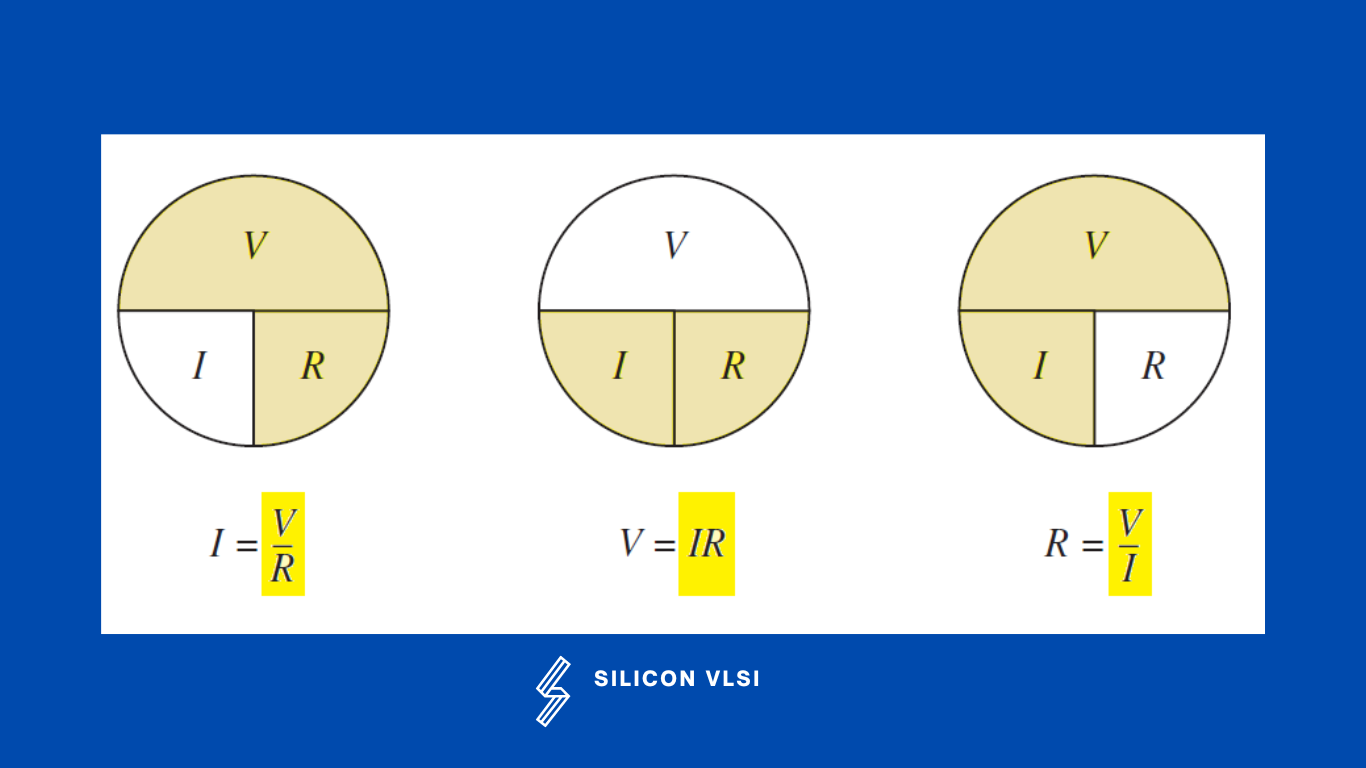The ohm is the standard unit of electrical resistance in the International System of Units ( SI ). Ohms are also used, when multiplied by imaginary numbers, to denote reactance in alternating-current ( AC ) and radio-frequency ( RF ) applications.
OHM’S LAW
Ohm’s law describes mathematically how voltage, current, and resistance in a circuit are related. Ohm’s law can be written in three equivalents form, the formula you use depends on the quantity you need to determine.
Ohm determined experimentally that if the voltage across a resistor is increased, the current through the resistor will increase; and, likewise, if the voltage is decreased, the current will decrease. Ohm also determined that if the voltage is held constant, less resistance results in more current, and more resistance results in less current. Ohm’s law states that current is directly proportional to voltage and inversely proportional to resistance.
I =V/R
where I is current in amperes (A), V is voltage in volts (V), and R is resistance in ohms(Ω).
“For a constant resistance, if the voltage applied to a circuit is increased, the current will increase; and if the voltage is decreased, the current will decrease.”
&
“For a constant voltage, if the resistance in a circuit is increased, the current will decrease; and if the resistance is decreased, the current will increase.”
Ohms Law Triangle
Ohm’s Law triangle is a visual representation of the mathematical relationship. V is equal to the product of I and R; I equals the quotient of V and R; and, R equals the quotient of V and I. #

Application of Ohm’s Law
Ohm’s law is used for calculating voltage, current, and resistance in electric circuits. #
- Use Ohm’s law to determine voltage, current, or resistance.
- Use Ohm’s law to find current when you know voltage and resistance
- Use Ohm’s law to find resistance when you know the voltage and current
- Use Ohm’s law to find voltage when you know the current and resistance
Ohm’s law calculation formula
The current I in amps (A) is equal to the voltage V in volts (V) divided by the resistance R in ohms (Ω), I = V / R. #
Example. I = 30V / 10Ω = 3A. The power P in watts (W) is equal to the voltage V in volts (V) times the current I in amps (A).
Ohms Law Calculator
This free Ohm’s Law calculator solves any of the variables in the Ohm’s Law equation using various units of measurement and gives out the solving steps
ohms law wheel
The Ohm’s Law Wheel is a simple tool that gives you a formula base on the variable you want and the variables you have. Please have a look. #
![]()